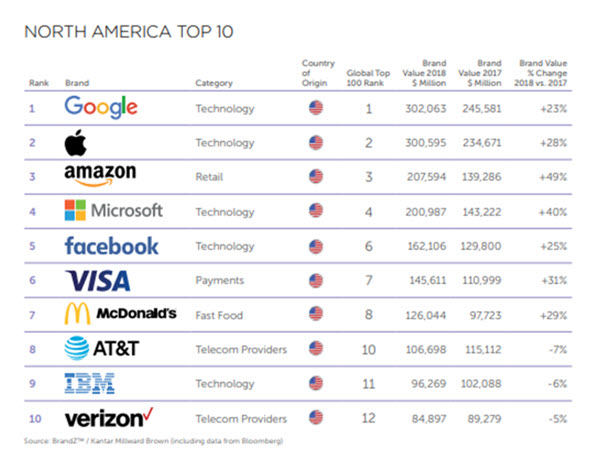
Television was an influential force in American culture during the 1950s. Advertisements were popular during this decade to promote products and encourage sales. They were also an important part of daily life. They were an expression of American society at that time.
Advertisers were keen to get their products noticed. Advertisements were longer in the 1950s than they are now and featured everyday people buying and using products. Speedy Alka Seltzer (Gillette), Gillette, Ajax Cleanser and Ribena are just a few of the memorable TV ads from 1950.
Advertisers worked hard to establish their brands in the minds of the public. Their ads were often animated and catchy. Popular were also Jingles. Sponsors often wouldn't let competitors be in a scene.
Lucky Strike's ad "Be Happy, Go Lucky" was, in fact, the most popular ad. It featured a beetle character, which gave viewers a sense originality. Betty White was the star of the commercials.

In the ten years that followed, tobacco, alcohol and cigarettes were the most popular products advertised on television. According to a journal on tobacco, tobacco was a large potential market for women. These ads were designed to convince people that smoking is cool.
During this decade, TV ads encouraged women to clean their homes and support their husbands. TV ads were more long than printed advertisements and could be seen on Sundays and late nights.
Women were shown as domestic workers and the focus was on raising children. The advertising was based on the belief that prosperity was a certainty in the years after World War II. But by the 1960s, Americans began to demand products that were more personal and expressed individuality.
In the 1950s, advertising reflected the ideal family. In this time, wives were expected to be sweet and loving and maintain their homes as well as prepare meals. They were also encouraged to spend on frivolous things.
A few well-known actors appeared in commercials on television in the 1950s. John Cameron Swayze was a news anchorman. He used outboard motors, Jackhammers, and waterskis to test Timex watches. He also smoked sponsor's cigarettes. This was required for the commercial to be approved.

Advertisers were encouraged a to create a unique image for products. Advertisers hired TV cowboys in this decade to sell their youth-oriented goods. The PG Tips ad featuring Peter Sellers (chimp) and the PG Tips ad are other notable 1950s ads.
Television became more common and advertisements became a popular form of entertainment. To accommodate this growing demand, an increasing number of TV stations was built. Over 3.1 million American homes had televisions by the mid-1950s. However, the cost of a television was expensive, so advertisers had to limit their commercials to less than 30 seconds.
The first commercial for color television was another popular commercial. This was an advertisement for Volkswagen. The color of the advertisement was for Volkswagen. The same trend was adopted by many other companies.
FAQ
What is an ad campaign?
An advertisement campaign is a series containing advertisements to promote a product. It could also refer the entire production of such advertisements.
The Latin word for "to Sell" gives rise to the term "ad". Marcus Terentius Varro (116–27 BC), was the first to make it a verb, meaning "to make sale".
Advertising campaigns are often carried out by large agencies or companies. Advertising campaigns can involve many media types, such as television, radio, print, and the internet.
Advertising campaigns last several months and are usually focused on specific goals. For instance, some campaigns aim to generate awareness while others focus on increasing sales.
Radio advertising: What are your options?
Understanding how different media interact with each other is crucial. All media forms can be considered complementary, rather than competing.
Radio is best utilized as an extension to TV advertising. Radio complements television advertising by reinforcing key messages or providing additional information.
Radio listeners may find TV commercials too long. Radio ads are usually shorter and less expensive.
What is the primary purpose of advertising?
Advertising is more about connecting with customers than just selling products.
Advertising is communicating ideas and values. Advertising is about changing minds and attitudes. It's all about building relationships.
It's all about making people feel good about themselves.
However, if your customers don't want what you have to offer, you won't be able to sell anything.
It is essential to first understand the needs and purchasing habits of your customer before you embark on any advertising project.
You can then design ads that resonate with them.
What is affiliate marketing?
Affiliate marketing is an online business model where you earn commissions by referring customers to products and services sold on other websites. The product owner pays you when someone buys from you.
Affiliate marketing is built on referrals. People don't need to do anything to purchase from you. Refer them to the website.
You don't have to sell anything. It's as simple to sell as to buy.
It takes just minutes to set up an account as an affiliate.
The more people you refer, the more commission you will receive.
There are two types of affiliates:
-
Affiliates who have their own websites
-
Affiliates that work for companies offering products and services.
Why not advertise your business on social media?
Social Media Marketing, or SMM, allows you access customers directly on social networks, such as Facebook, Twitter LinkedIn YouTube YouTube Google+. These networks can be targeted with keywords.
Because this advertising method costs less online than traditional methods, it's more cost-effective. This allows you to establish strong relationships with current and future clients.
It's very easy to start using social networks to promote your business. You only need a smartphone or computer and internet access.
What does it mean to be an advertiser buyer?
Advertising space is purchased by an advertiser on TV, radio and printed media.
Advertisers are charged for the time their message will appear.
They do not always look for the best ads, but are looking for the most effective to reach their target audience.
Advertisers may have demographic information such as the age, gender, marital status, income level, occupation, hobbies, and interests of their customers.
This data can be used by the advertiser to decide which media is most effective for them. An example is direct mail that appeals to older people.
Advertisers also consider the competition. If there are similar businesses nearby, they might choose to place their ads near those competitors.
Advertisers should also consider how much money they have available and how long it takes to use it.
How do I choose my target audience?
Begin by talking to yourself and people close to you. If you don’t know where or how to start, ask yourself "Whom are I trying to reach?"
Ask yourself these questions: Who are the most influential people in my industry? What are the problems they face daily? What are their top talents? They hang out online.
Return to the beginning. Why did your start? What was your problem and how did it solve?
These answers will help identify your ideal clients. These answers will help you understand your ideal clients and what motivates them to buy from you.
To get clues about who they cater to, you can also check out your competitors' social media pages and websites.
Once you've identified your target customers, you'll need to decide which channel(s) to use to reach them. For example, if your company provides services to real estate agents, you might create an informational website targeting home buyers.
If your company provides software to small businesses, you might consider creating a blog for those owners.
If you sell clothing, you could create a Facebook page for teens. A Twitter account could be set up by restaurant owners to allow parents to search for places that are kid-friendly.
The important thing is that you have many options for getting your message across.
Statistics
- It collects money from the advertisers, keeps 32% for its role in facilitating the process, and the remaining 68% goes to the publisher (you). (quicksprout.com)
- Advertising spending as a share of GDP was about 2.9 percent. (en.wikipedia.org)
- Google will display whichever ad type (CPM or CPC) is expected to earn more revenue for the publisher, which is in Google's best interest since they take a 32% share of the revenue. (quicksprout.com)
- Worldwide spending on advertising in 2015 amounted to an estimated US$529.43 billion. (en.wikipedia.org)
External Links
How To
How do I advertise on Google?
AdWords, Google's advertising platform, allows businesses to buy ads based upon keywords they wish to target. First, you need to set up an account. First, you choose a campaign name. Next, you set the budget and select the ad type. Finally, add keywords. You then place your bids on these keywords. Clicking on an ad will pay you only if it is clicked by someone who searched using one of your targeted keywords. This allows you to get paid even if people don’t buy anything.
Google offers many tools to ensure your ads are successful. These tools include Ads Preferences Manager Manager and Keyword Planner. These allow you to see what works best for your business.
A keyword planner can help you identify the right keywords for your campaigns. You can also see how competitive certain keywords are, which will help you decide whether to spend money bidding for them.
Ads Preferences Manager can be used to adjust settings such as the maximum impressions per hour and the minimum price per click.
Analytics allows you monitor and compare the performance to your ads against other companies. You can also view reports that show how well your ads compared to others.